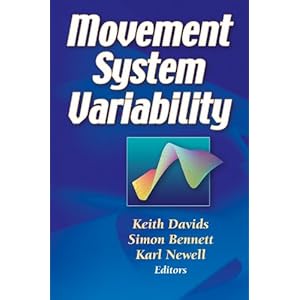I must admit that my recent obsession is statistics and variability. Statistics got my attention when I started playing/working in Excel to create monitoring system for my current club utilizing data from Polar Team2.

Recently I have seen EXCELLENT presentation from Stuart Cormack regarding monitoring in rugby. They utilize GPS, biochemical monitoring, sRPE and Neuromuscular fatigue testing and create light system that red-flags players that need more attention and are away from their usual variability, both to their individual baseline and team baseline (they utilize standard difference score and rolling averages over 4 weeks).
Interestingly enough they DON’T utilize HR monitoring. I agree with that, but at the moment I don’t have resources to track GPS, biochemical monitoring and jumping/sprint performance, thus I need to utilize what I do have. Anyway, here is the first part of the presentation.
If I ever plan getting licensed besides my B.S. Degree and Tudor Bompa International, I might get it from ASCA. I am somehow in love with their pragmatical work. And besides they have Dan Baker as the President.
When it comes to variability (which is ultimately related to mentioned standard difference score) I came across it years ago, but recently it knocked on my doors in the form of HRV and Robert Sapolsky’s lecture. These lectures are a MUST watch and they are new addition to Biology of Behavior lectures I already referenced here.
The impact that variability has on the measurement and evaluation can be seen in Heart Rate Variability research and monitoring systems. I started playing with iThlete and BioForce HRV and monitor my HRV every morning. I am also communicating with Joel Jamieson about getting more HRV sensors for some of my athletes and trying to put some correlations between the Polar Team2 workload and HRV reaction (it would be nice to have measured scores like jump and sprint performance as well and GPS, but I don’t have it at the moment). For more info about HRV I highly suggest checking the blog by Andrew Flatt and the forthcoming book on HRV by Joel Jamieson at 8WeeksOut.
 |
If you want more info on variability in general and how it affects measurement, evaluation and everything you can check the book by prof.Keith Davids. I don't have this book, but I plan getting it soon. I must admit that it is expensive though.
Back to statistics. Since I am basically new to this area, I know only the basic stuff and not especially in detail. So, I was thinking about spending some time reading New View of the Statistics by Will G Hopkins. I know that one of my professors recommend this more than any book on the subject.
Speaking on all of this (monitoring, statistics, blah, blah) I am thinking about going back to MATLAB (see the short video here). I was pretty fluent with MATLAB during 2004-2005, but then I quit working with it. I started using MATLAB to experiment with one motor control model (Lambda Model) during that time. If you are interested here is the paper in Serbian. I remember that back then I discovered Euler and Runge-Kutta methods of simulation on my own and then lately I found out about them. Funny. I should have been an engineer, but then I wouldn't need to deal with soccer players :). Also, here is the link to one of my applications I develop during that time.
Anyway, I am thinking about rehearsing my MATLAB skills and using it to collect, analyze and visualize the data, maybe even create a system for monitoring. The problem is that this would take away my time from developing coaching skills and put me more in the lab coat category/extreme. Besides I am also interested into performance analysis tools like SportsCode. Soccer is way behind baseball (volleyball as well) in terms of stats and analysis. And yes I am being influenced by Moneyball.
In the next part I will try to be more practical and do an analysis of test and re-test of 30-15IFT by Martin Buchheit. Stay tuned…




Mladen,
ReplyDeleteSlightly off topic but related to previous series of posts.
If 85% of the distances covered in a sport were at or below vV02max/MAS would it be fair to assume it is an aerobically dominant sport?
That is a tricky question I think I adressed in 8 Weeks Pre-season plan
Deletehttp://complementarytraining.blogspot.com/2011/01/8-weeks-soccer-pre-season-plan-part-1.html
Thanks for the reply Mladen. Are you referring to the pacing etc in that paper?
DeleteI'm including some running speeds as a percentage of match time. I was wondering if you could throw in your 2 cents. Been looking at this for a while and trying not to miss the forest for the trees.
0-2m/s = 64% of match time = 34% match distance
2-3.5m/s = 20% of match time = 27% match distance
3.5-5m/s = 9.7% of match time = 20.7% match distance
5.0-6.0m/s = 3% of match time = 8.27% match distance
6+m/s = 2.97% of match time = 8.9% match distance
Thanks for any input you can give (if you can). I appreciate your time and work on this blog.
One logical question Callum - does lower percentage of occurrence of certain pattern in a game automatically means low importance as well?
DeleteCertainly not. Jeremy Sheppard always uses the example of jumping in rugby league. A player can have a massive impact on the game by one single jump and wouldn't show up in time-motion at all. I'm just trying to tie these demands into similar aerobic-alactic type sports as people like Tenney and yourself have discussed.
DeleteHey mate, if you enjoyed Sapolsky's lectures, I'd recommend reading 'chaos' by james gleick; a lot of those lectures were based off material from that book. Really good read.
ReplyDelete